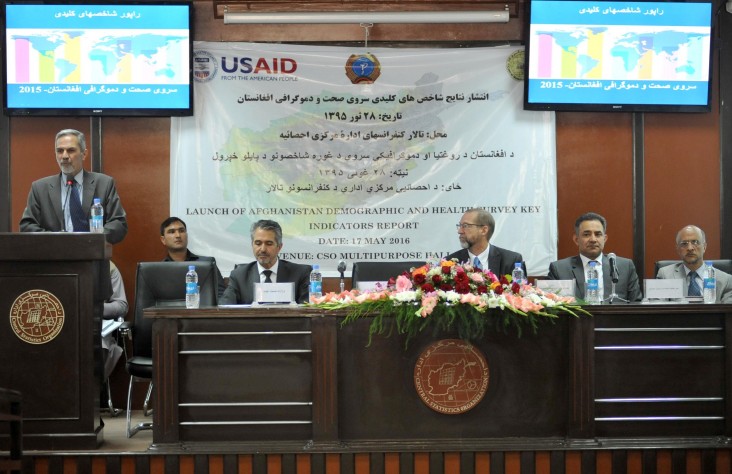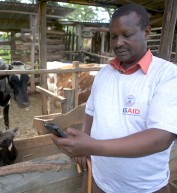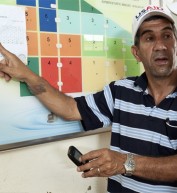
For Immediate Release
Kabul, Afghanistan - Almost half of births in Afghanistan are being delivered in a health facility, and just over half are assisted by a skilled provider, according to Afghanistan’s first ever Demographic and Health Survey Key Indicators Report [670K], released today by the Afghan Central Statistics Organization and the Afghan Ministry of Public Health. The Key Indicators Report is the first release of findings from the Afghanistan Demographic and Health Survey, the first nationally representative demographic and health survey ever conducted in Afghanistan. Surveyors interviewed nearly 30,000 women and nearly 12,000 men throughout Afghanistan on topics ranging from education to family planning, maternal and child health, HIV/AIDS, and cancer. When the final report is released in December 2016, the survey will set a new baseline for demographic and health data in Afghanistan.
The report indicates that progress has been made in reducing childhood deaths, but challenges remain in accessing basic health services for women and children. According to the report, about 1 in 20 children in Afghanistan do not survive until their 5th birthday. The majority of these childhood deaths occur during the first year of life. Compared to earlier time periods, both infant and under-five mortality have declined, suggesting that child health interventions are making a difference. The report also found that fewer than half (46%) of children age 12-23 months have received all of the recommended basic vaccinations - Bacillus Calmette-Guerin (BCG), measles, and three doses each of Pentavalent and Polio - while one in eight children has not received any vaccinations at all.
Other findings from the Key Indicators Report include:
- Almost 60% of women received at least one antenatal care visit during their last pregnancy, but only 18% received four or more visits, as recommended.
- Women in Afghanistan are having, on average, 5.3 children. One in five married women are currently using a modern method of family planning. The pill, injectables, and male condoms are the most commonly used methods.
- One quarter of married women have an unmet need for family planning. That is, they say they either want no more children or they want to delay their next birth by at least two years but are not using a method of contraception.
- Slightly more than 40% of children under the age of 6 months are exclusively breastfed. Though 56% of children ages 6-8 months receive complementary food, only 10% of these children are fed the minimum acceptable diet.
With funding from the United States Agency for International Development (USAID), the Central Statistics Organization and the Ministry of Public Health collected data for the Afghanistan Demographic and Health Survey between June 2015 and February 2016. ICF International provided technical assistance through The Demographic and Health Survey (DHS) Program, a USAID-funded project providing support and technical assistance in the implementation of demographic and health surveys in countries worldwide.
The final report of findings from the Afghanistan Demographic and Health Survey is scheduled to be released in December 2016.







Comment
Make a general inquiry or suggest an improvement.